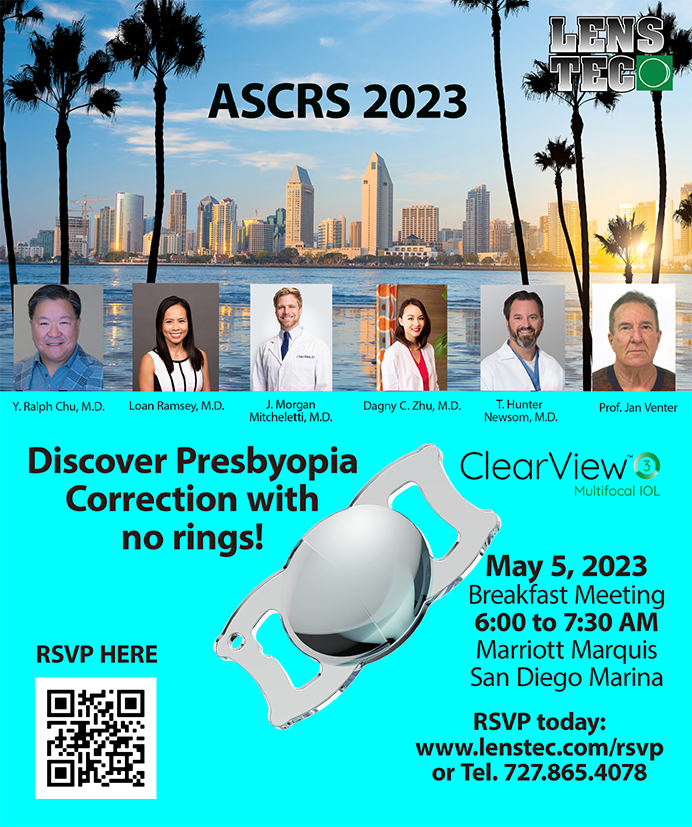
Glaucoma care has undergone tremendous changes during the past decade. In addition to the introduction of MIGS, several new topical therapeutics, and sustained-release drug delivery, robust data were reported that support selective laser trabeculoplasty as a primary treatment for primary open-angle glaucoma and ocular hypertension,1 and high-quality research was published that supports early lens extraction for the treatment of angle-closure disease.2 Expanded options allow glaucoma specialists to intervene sooner in the disease course, which can improve patients’ quality of life, slow disease progression, and delay or avoid the need for more invasive surgery.
When a system undergoes a major upgrade, end-users must learn how to interface with the changes. As glaucoma care evolves, the timing and pattern for referrals must adapt as well.
AN ESCAPE FROM TOPICAL AGENTS
When a drug regimen becomes more complex, patient adherence declines, the risk of side effects such as ocular surface disease increases,3 and costs rise. Multiple studies have shown that patient adherence to prescribed glaucoma medical therapy is often poor.4 In the Glaucoma Adherence and Persistency Study (GAPS), only 10% of patients persisted with therapy over the course of a year.5 In another study, less than 33% of patients could instill eye drops correctly.6
The concept of maximum tolerated medical therapy should be recast as maximum reasonable medical therapy. An earlier referral of patients to a glaucoma specialist can break down medication-related barriers and transition at least some of the burden of treatment from the patient to the provider through the first-line use of selective laser trabeculoplasty, the implantation of a sustained-delivery device, or surgery, for example. Topical therapy may be the best approach to treatment in some patients, but it may be possible to decrease the number of medications they require. All patients deserve to know their options.
TIME FOR CATARACT SURGERY
A combined procedure should be considered for patients who have glaucoma and a visually significant cataract. If the patient is a glaucoma suspect, glaucoma screening and disease staging before cataract surgery are warranted. MIGS procedures have been found to be safe and effective for certain forms of glaucoma, but devices such as the iStent Trabecular Micro-Bypass Stent (Glaukos) and Hydrus Microstent (Ivantis) are approved for use only in conjunction with cataract surgery, and a pseudophakic glaucoma patient has missed this opportunity. Standalone options are available, but the risk associated with additional surgery can be avoided with a combined procedure.
Multiple studies have shown that cataract surgery alone lowers IOP. However, MIGS combined with cataract surgery can decrease IOP and the number of glaucoma medications compared with cataract extraction alone. The HORIZON study found that cataract surgery combined with Hydrus Microstent implantation decreased the number of patients who required subsequent incisional glaucoma surgery or cyclodestruction.7 Even patients with glaucoma that seems to be well controlled with medications may develop tachyphylaxis, medicamentosa, or an allergy, or these patients may prove to be rapid progressors.
ANGLE CLOSURE
The Effectiveness in Angle-Closure Glaucoma of Lens Extraction (EAGLE) trial provided strong evidence that clear lens extraction (CLE) has greater IOP-lowering efficacy and is more cost-effective than laser peripheral iridotomy combined with topical medical therapy in patients who have primary angle closure and high IOP or primary angle-closure glaucoma (PACG).2 The EAGLE trial excluded patients younger than 50 years of age to minimize the effect of loss of accommodation with CLE. Patients with a visually significant cataract were also excluded because they can logically proceed straight to cataract extraction, bypassing laser peripheral iridotomy.
Patients with primary angle closure or PACG who have extensive (at least 4 clock hours) peripheral anterior synechiae merit a referral to a glaucoma specialist for consideration of CLE or cataract extraction combined with goniosynechialysis to release the synechiae and potentially improve aqueous outflow.8 Goniosynechialysis should be performed by a glaucoma surgeon, who has experience operating under indirect gonioscopy and in the confines of the iridocorneal angle, because errors could result in serious complications such as hyphema, iridodialysis, or cyclodialysis. Cataract extraction or CLE and goniosynechialysis can also be combined with MIGS to improve IOP control in patients who have PACG.9
CONCLUSION
Many of the traditional reasons for a glaucoma referral remain unchanged: rapid disease progression, severe stage at diagnosis, and uncontrolled or acutely elevated IOP. The sentiment, however, that all nonsurgical options must be exhausted before a referral has (fortunately) become outdated. Technological advances and high-quality research encourage earlier intervention for glaucoma as a means of enhancing patients’ quality of life, reducing costs, and decreasing the burden of life-long compliance, shifting the onus of treatment from the patient to the provider.
1. Gazzard G, Konstantakopoulou E, Garway-Heath D, et al; LiGHT Trial Study Group. Selective laser trabeculoplasty versus eye drops for first-line treatment of ocular hypertension and glaucoma (LiGHT): a multicentre randomised controlled trial. Lancet. 2019;393(10180):1505-1516.
2. Azuara-Blanco A, Burr J, Ramsay C, et al; EAGLE Study Group. Effectiveness of early lens extraction for the treatment of primary angle-closure glaucoma (EAGLE): a randomised controlled trial. Lancet. 2016;388(10052):1389-1397.
3. Leung EW, Medeiros FA, Weinreb RN. Prevalence of ocular surface disease in glaucoma patients. J Glaucoma. 2008;17(5):350-355.
4. Tsai JC. A comprehensive perspective on patient adherence to topical glaucoma therapy. Ophthalmology. 2009;116(11 suppl):S30-36.
5. Friedman DS, Quigley HA, Gelb L, et al. Using pharmacy claims data to study adherence to glaucoma medications: methodology and findings of the Glaucoma Adherence and Persistency Study (GAPS). Invest Ophthalmol Vis Sci. 2007;48(11):5052-5057.
6. Stone JL, Robin AL, Novack GD, Covert DW, Cagle GD. An objective evaluation of eyedrop instillation in patients with glaucoma. Arch Ophthalmol. 2009;127(6):732-736.
7. Rhee DJ. 4-Year Findings from the HORIZON Trial. Paper presented at: American Glaucoma Society Annual Meeting; February 27, 2020; Washinton, DC.
8. Ahmed IIK, Durr GM. Goniosynechialysis … to release or not to release? That is not the question. Ophthalmol Glaucoma. 2019;2(5):277-279.
9. Dorairaj S, Tam MD, Balasubramani GK. Twelve-month outcomes of excisional goniotomy using the Kahook Dual Blade in eyes with angle-closure glaucoma. Clin Ophthalmol. 2019;13:1779-1785.




